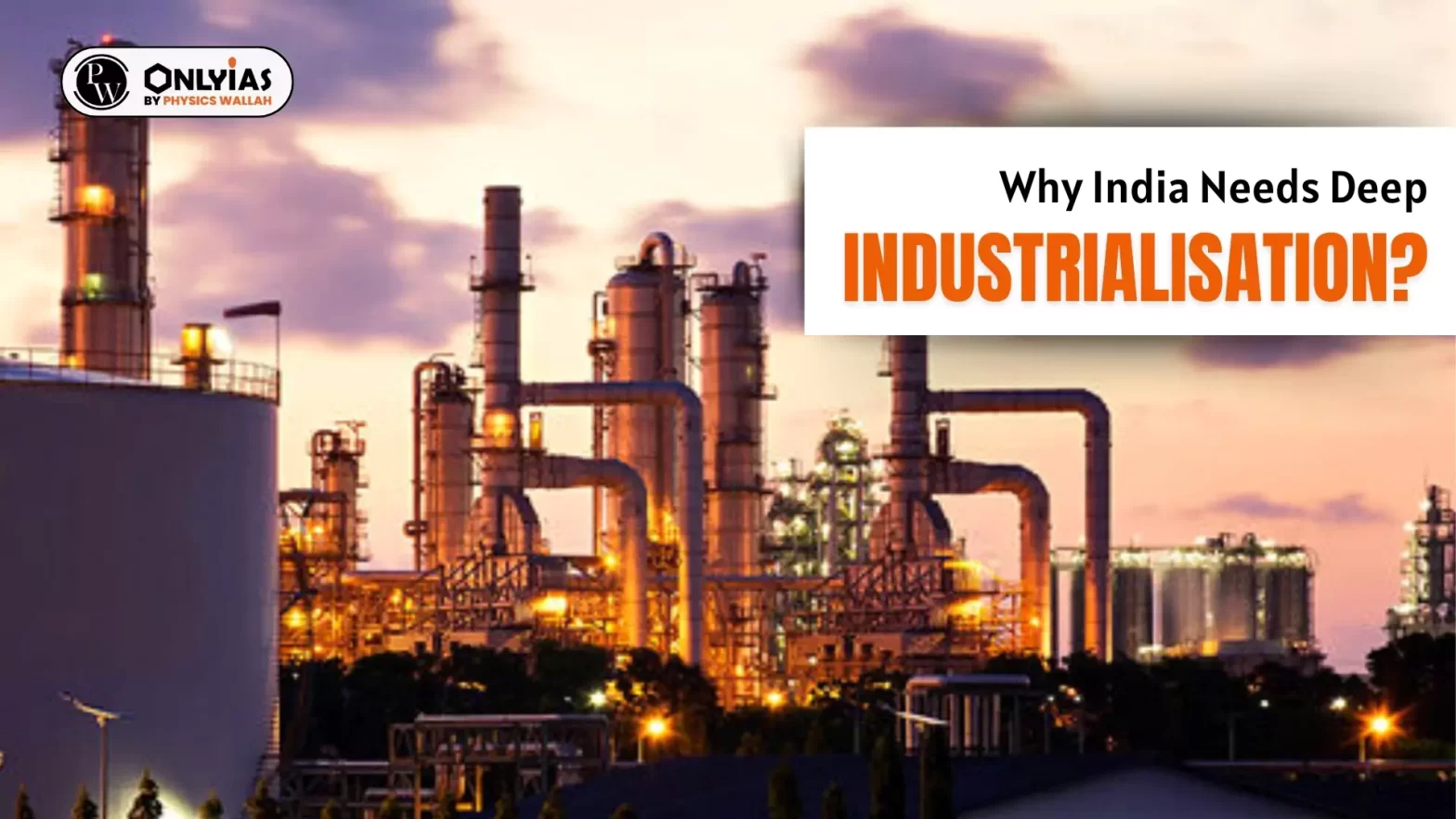Context:
This editorial is based on the news “Why India needs deep industrialisation” which was published in the Hindu. This article expresses the change of globalisation process to deglobalization after the experience of the COVID-19 pandemic. The Inflation Reduction Act in the U.S., the European Green Deal, and India’s Atmanirbhar Bharat are prominent examples.
Industrialisation In India: Current Economic Scenario
- No Adequate Share by Manufacturing Sector: In 75 years, India has not been able to industrialize sufficiently. Its manufacturing share in output and employment has always been stagnant and below 20%, except during the ‘Dream Run, 2003–08’.
- Even the 1991 economic reforms, which promised labor-intensive industrialisation, didn’t alter this reality.
- Present Achievement: India’s growth momentum has sustained. India recovered relatively quickly from the pandemic, yet it has entered a phase of ‘premature deindustrialisation’.
About Services-Driven Growth in India
- Employment elasticity of services-led growth is poor.
- India’s services-driven growth since the late 1980s had two negative implications:
- It could not absorb the labor exiting agriculture in the same way that manufacturing would have.
- The service sector required a large highly skilled workforce that India could not adequately supply.
Investments in Higher Education in India
- The higher education institutions cultivated self-serving elites who played a role in India’s IT “revolution” while contributing to industrial stagnation.
- Investments in human capital were deeply unequal and India is one of the world’s most unequal countries in terms of education.
- The rural India was hampered by a poor endowment of human capital, and were not able to start entrepreneurial ventures remotely.
Return to Education
- Experience of Differences: The returns to education differ across classes and social groups.
- Inaccessibility: Higher education is not as inaccessible as it was earlier. The differential quality of schooling feeds into the quality of higher education, which feeds into labor market outcomes.
- Not Suitable for Majority Graduates: The high-skill services would suit the traditional elites but not the majority first generation graduates from colleges in rural areas and small towns.
- Role of Class System: The poor quality of most state-run schools and colleges is closely linked to the elites’ renunciation of public education. Even as these fault lines are new forms of class divide in India, they reflect older ones rooted in the caste system.
Hindrance to Industrialisation
- The lack of mass education meant that an important cultural prerequisite for industrialisation was missing.
- India has looked down upon certain occupations, particularly those that are essential (electrical, welding, etc.), partly impeding organic innovation in manufacturing.
Conclusion
To counter challenges, the rise of useful knowledge is key to technological progress and growth in modern economies. A culture of growth also requires the revaluation of labor, production, and technology and India needs to focus on the vocational skills needed for manufacturing.
India needs deep industrialisation, not just the service sector, that has the power of changing the foundations of society.
![]() 14 Feb 2024
14 Feb 2024

